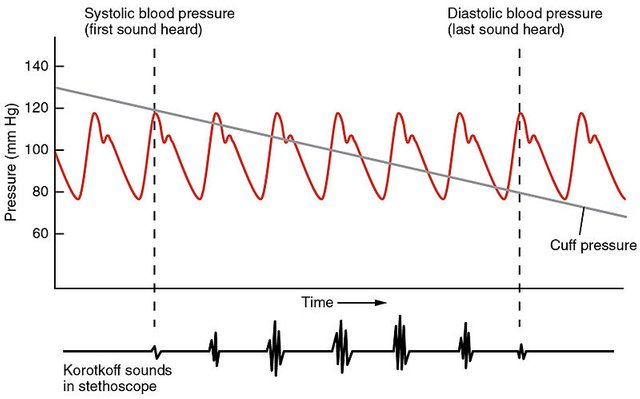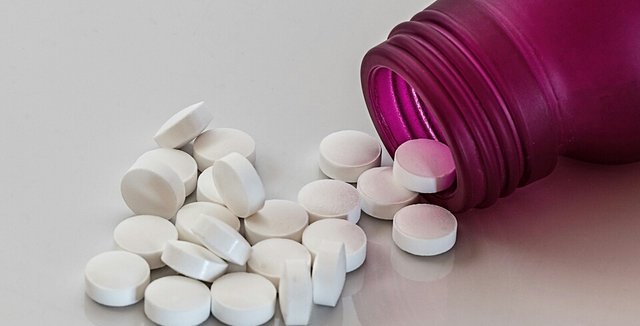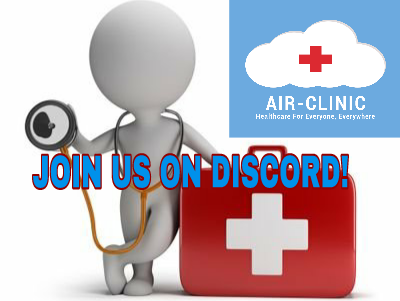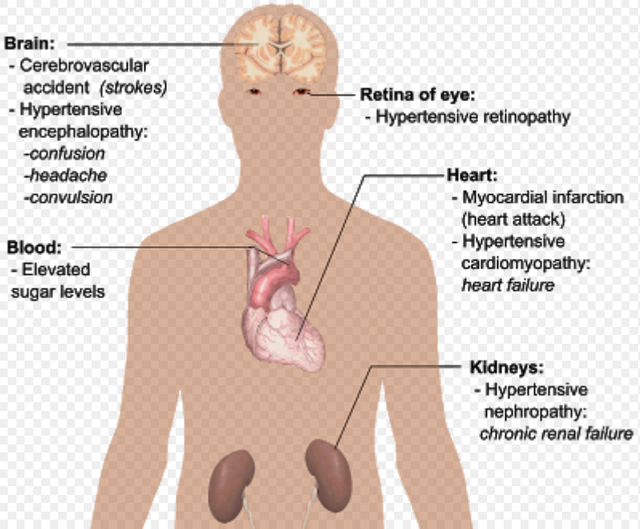Let's talk about High Blood Pressure and the effective ways to manage it
Few years ago, the Primary Health Care Development Board (PHCDB) in my country launched a campaign in all the Primary Health Clinics to orientate people of the need to attend to their health. The awareness which was majorly focussed on adults in rural areas has since then brought about a tremendous improvement in the number of adults registered for medical check in every primary health clinics in my country. In the Health Clinic where i worked, statistics showed that 3 out of every 5 newly registered adults were nursing an irregular blood pressure when they were examined.
Just like these people, many are still ignorantly nursing this 'silent killer' called high blood pressure. I reffered to it as silent killer because uncomplicated high blood pressure usually occurs without any symptoms. It is however, possible that you are aware of this subject matter, but you keep ignoring the needful despite the knowlege on the consequences. Now, let me start by asking you the most important question for you to either justify or defend yourself. The question is, when last did you check your Blood Pressure? Ohhhh, not recent that you can remember? Anyway, in my plight for us to re-visit our health status, i have decided to share with us important information on the subject matter.
As the name implies, Blood pressure (BP) is the pressure of circulating blood on the walls of blood vessels. When it is higher than normal, it is reffered to as High Blood Pressure (HBP) or Hypertension. This means that there is a high tension or pressure in the arteries. Arteries are vessels that carry blood from the pumping heart to all the tissues and organs of the body. High blood pressure does not mean excessive emotional tension, although, emotional tension and stress can temporarily increase blood pressure.
Blood Pressure Classification and Readings
Normal blood pressure is below 120/80. Blood pressure between 120/80 and 139/39 is called “pre-hypertension” and BP of 140/90 or above is considered high source . HBP is often called the silent killer because, in the initial stages, it is presented with no symptoms. It is only after an organ in the body is irritated or damaged that the consequences of HBP are realized. The blood pressure recording measures within the arteries at two different times. The first time reading, the systolic pressure, measures the pressure when the heart is pumping blood to the body, blood pressure measurement is listed with two numbers, the normal being less than 120/80 with 120 being the systolic pressure when the heart is pushing blood through the arteries while diastolic pressure is when the arteries are at rest and the heart is refilling.

Blood Pressure Graph - CC BY 3.0, link
It was previously thought that rise in diastolic blood pressure was a more important risk factor than systolic elevations, but it is now known that in 50 years or older, systolic blood pressure represents a greater risk source. Generally, hypertension is clearly a major public health problem. The age group affected are usually seen in some middle aged to elderly individuals, people living a sedentary lifestyle, excessive consumption of alcohol and smoking, obese patients and familial predisposit
Symptoms of High Blood Pressure
Uncomplicated High Blood pressure usually occurs without any symptoms (silently), so it has been named the “silent killer”. This is because it can progress to finally develop any one or more of several potentially fatal complications of hypertension, such as heart attacks or strokes. It can be present and remain unnoticed for so many years or even decades. These happen when there are no symptoms and those affected fail to undergo periodic blood pressure screening. Some people with uncomplicated hypertension may not experience any symptoms. However, the symptoms of complicated hypertension can include headaches, dizziness, shortness of breath, nose bleeds, flushing, dizziness, chest pain, visual changes and blood in the urine. They don’t occur in everyone high blood pressure but waiting for a symptom of this condition to appear could be fatal.
Management and Prevention of High Blood Pressure
Cure of high blood pressure may usually be unachievable. Therefore, control of blood pressure is critical in preventing the organ damage e.g. renal failure, critical blindness, heart failure, cardiovascular accident etc. Hence, it’s management is considered highly crucial. Increased awareness and screening programs to detect early, uncomplicated hypertension are keys to a successful treatment.
Successful early treatment of high blood pressure can significantly decrease the risk of stroke, heart attack and kidney failure. The goal for patients with combined systolic and diastolic hypertension is to attain a blood pressure of 140/85 mmHg. Bringing the blood pressure down even lower may be desirable in Afro-American patients with diabetes or chronic kidney diseases. Although, life style change in pre-hypertension patients is appropriate, it is not well established that treatments with medication of patients with pre-hypertension is beneficial.
Remedial steps in the management of High Blood Pressure
Lifestyle modification such as feeding on a heart-healthy diet is vital for helping to reduce high blood pressure. This helps to reduce the risk of complications such as heart disease, stroke, and heart attack. A heart-healthy diet butress on low salt and fat foods such as fruits, vegetables, whole grains and lean proteins etc. In addition, cessation of smoking and excess alcohol consumption should be halted. However, some factors cannot be helped in being the cause of high blood pressure. Such cases such as old age, family history, certain medical conditions and ethnic origin can enhance the risk of High blood pressure.

Exercise Activities to reduce the risk of High Blood Pressure complications from Pixabay CCO
A regular exercise program may help lower blood pressure over the long term: activities such as jogging, bicycle riding, power walking, or swimming for 30 to 40 minutes may lower blood pressure by as much as 5 to 15 mmHg. There also appear to be a relationship between the amount of exercise and the degree to which the blood pressure is lowered. So, the more you exercise (up to a point), the more you lower the blood pressure. This beneficial response occurs only with the aerobic (vigorous and sustained) exercise programs. Please note that any exercise program that you might want to undergo to help in lowering your blood pressure must be recommended or approved by a physician.
Medication
Blood pressure persistently higher than 140/90 mmHg, usually is treated with lifestyle modifications and medications. More aggressive treatment may be recommended in certain circumstances if the diastolic pressure remains at a border line level (usually less than 90 mmHg, yet persistent above 85). These circumstances include border line diastolic pressure in association with end organ damage, systolic hypertension, or factors that increase the risk of cardiovascular disease, such as age over 65 years in Africa-America descent, smoking, hyperglycemia (elevated blood fats) or diabetes.
Any one of the several classes of medications is used only in combination with another anti-hypertensive medication in specific medical situations. Angiotensin converting enzyme (ACE) inhibitors or angiotensin receptor blocking (ARB) drugs are the drugs of choice in patients with heart failure, chronic kidney failure (in diabetes or non-diabetes), or heart attack (myocardial infraction) that weakens the heart muscle (systolic dysfunction). Also, beta-blockers are sometimes the preferred treatment in hypertensive patients with resting tachycardia (racing heart beat when resting) or an acute (rapid onset) heat attack source.

Effective medication to reduce the risk of High Blood Pressure complications from Pixabay CCO
Patients with hypertension may sometimes have a co-existing second medical condition. In such cases, a particular class of anti-hypertensive medication or combination of drugs may be chosen as the first line approach. The idea in these cases is to control the hypertension while also benefitting the second condition. For example, beta-blockers may treat chronic anxiety or migraine headache as well as hypertension. Also, the combination of an ACE inhibitor and an ARB drug can be used to treat certain disease of the heart muscles (cardiomyopathies) and certain kidney disease where reduction in proteinuria would be beneficial.
Conclusion
Certain classes of anti-hypertensive medications should not be used e.g. Dihydropyridine calcium channel blockers used alone may result in such effects for patients with chronic renal diseases by increasing proteinuria. However, an ACE inhibitor will blunt this effect. The non-dihydropyridine type of calcium channel blockers should not be used in patients with heart failure. However, these drugs may be beneficial in treating certain arrhythmias. Some drugs, such as minoxidil, may be relegated to second or third line choices for treatment. Clonidine is an excellent drug but has side effects such as fatigue, sleepiness, and dry mouth making it a second or third line choice.
Please consult your Medical Physician for guidance on all health related issues
All Images Used In This Article, Are Linked To The Respective Owners
Thank you for reading
|References|
Healthline: Everything You Need to Know About High Blood Pressure
Medicinenet:High Blood Pressure Signs, Causes, Diet, and Treatment
http://www.bloodpressureuk.org: Blood Pressure and you
If you write STEM (Science, Technology, Engineering, and Mathematics) related posts, consider joining #steemSTEM on discord here. If you are from Nigeria, you may want to include the #stemng tag in your post. You can visit this blog by @stemng for more details. You can also check this blog post by @steemstem here and this guidelines here for help on how to be a member of @steemstem. Please also check this blog post from @steemstem on proper use of images devoid of copyright issues here

.jpg)

You got a 5.04% upvote from @upme thanks to @oluwambe! Send at least 3 SBD or 3 STEEM to get upvote for next round. Delegate STEEM POWER and start earning 100% daily payouts ( no commission ).
Congratulations! This post has been upvoted from the communal account, @minnowsupport, by oluwambe from the Minnow Support Project. It's a witness project run by aggroed, ausbitbank, teamsteem, theprophet0, someguy123, neoxian, followbtcnews, and netuoso. The goal is to help Steemit grow by supporting Minnows. Please find us at the Peace, Abundance, and Liberty Network (PALnet) Discord Channel. It's a completely public and open space to all members of the Steemit community who voluntarily choose to be there.
If you would like to delegate to the Minnow Support Project you can do so by clicking on the following links: 50SP, 100SP, 250SP, 500SP, 1000SP, 5000SP.
Be sure to leave at least 50SP undelegated on your account.
High Blood pressure is the easiest condition to take a life if unchecked..
Thanks for sharing with us such a vital information
You are right. Everyone needs to check his BP regularly irrespective of the appearance of any symptoms.
Thanks for stopping-by @tbexpert
Go here https://steemit.com/@a-a-a to get your post resteemed to over 72,000 followers.